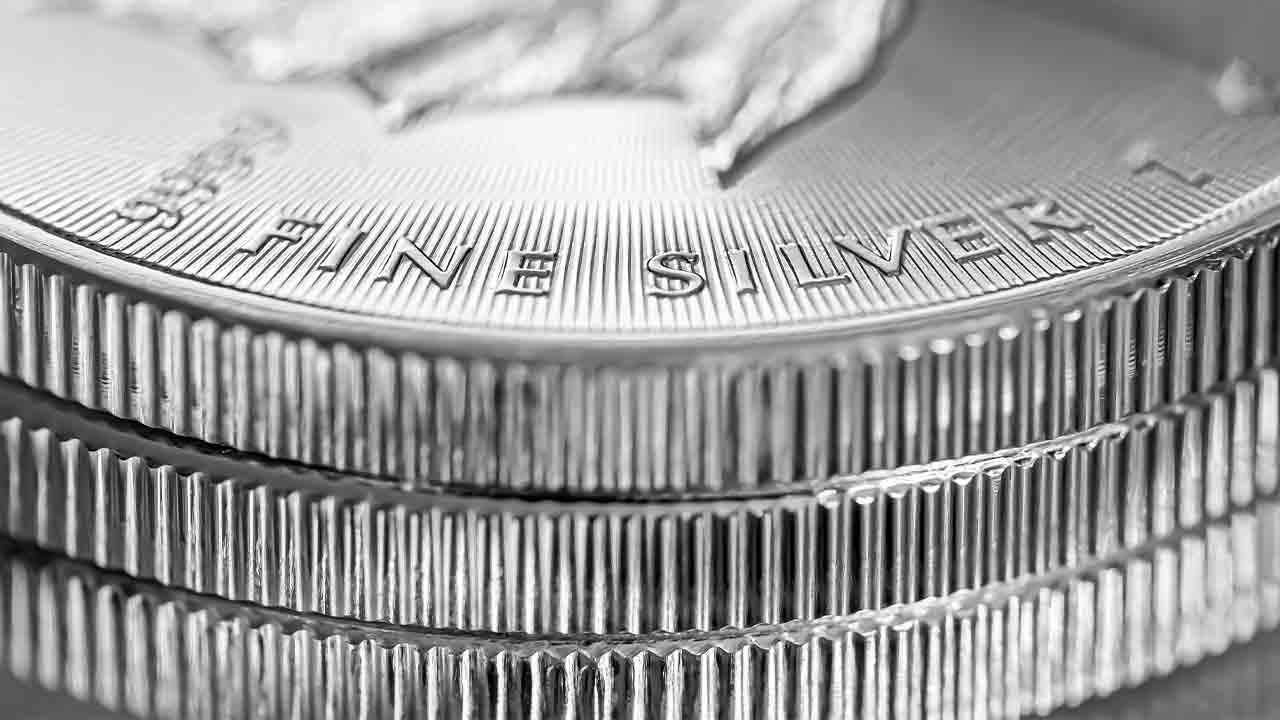(Clint Siegner, Money Metals News Service) The Silver Institute released its 2024 World Silver Survey last week. According to the data, silver demand outstripped supply in 2023, for the fifth year in a row.
The deficit was just over 142 million ounces. And the forecast for 2024 indicates that the annual production shortfall will nearly double to 265 million ounces.
Silver prices have finally begun playing some catchup to gold. Perhaps speculators in the futures market have finally begun paying attention to fundamentals like supply and demand.
The overall supply deficit is corroborated by another data point. COMEX vault inventories of silver are also in decline.
If demand from industry and from investors is greater than what miners and recyclers can produce, then additional silver must come from existing above-ground stocks.
The COMEX vaults are a major stockpile. Sure enough, inventory in those vaults has been dwindling. The COMEX reports total silver inventory is just over 291 million ounces in the latest report, published Friday. That is down from the peak of just over 400 million ounces in early 2021.
Inventory in the much larger London Bullion Market Association (LBMA) vaults has also fallen sharply. Stocks are down more than 300 million ounces from the 1.2 billion ounce peak in 2021.
Ted Butler, of Butler Research, has posed an interesting question for investors watching supply and demand.
Last fall, he sent a letter to both the heads of the SEC and the CFTC.
His question is whether the 100 million ounces of silver inventory reported by the iShares Silver Trust ETF (SLV), which is stored by JP Morgan Chase, is also being reported by JP Morgan as COMEX inventory. It is a simple question, but the regulators have yet to answer.
There are many reasons to think twice before buying silver or gold ETFs. The potential double counting of the inventory which supposedly backs those securities is just one of them. Their inherent counterparty risk is another.
In addition to the questions about double counting, the outstanding shares of SLV have recently begun falling.
Shares outstanding are a representation of the silver inventory held by the ETF. There were 482 million shares on April 8th. That number has fallen to 455 million shares currently.
That means SLV’s inventory has fallen by 5.6% in two weeks, which is counterintuitive given what has happened to silver prices in that time period.
Higher silver prices have not led Authorized Participants in the ETF to add silver and create more shares that they can sell into the market.
They are removing silver bars instead.
If the silver deficit reaches 265 million ounces this year, as forecast, how many of those ounces will come from the LBMA or COMEX warehouses? And at what price?
Of course, much of the inventory in those vaults is not actually for sale at present. Although, at some price, nearly everything is for sale.
The COMEX reports its holdings in two categories – registered and eligible. Only the registered holdings are available for delivery now. The owners of the “eligible” silver must be persuaded to register their bars before that metal can be sold and delivered.
The registered inventory is only 47 million ounces currently – a small fraction of the 291 million ounce total in the COMEX system.
The LBMA does not publish how much of the inventory in their system is actually available for delivery. It is almost certainly far less than the reported total.
But, to be certain, there are large amounts of silver outside of publicly reported stockpiles that could come back to market at higher prices. Stocks of bullion coins and bars are well north of two billion ounces – so that’s a lot more potential supply that could also come to market.
Even though there is still lots of silver around, the silver production shortfalls will put pressure on prices to go higher in order to induce new mine production and/or draw silver out of private hoards.
Clint Siegner is a Director at Money Metals Exchange, a precious metals dealer recently named “Best in the USA” by an independent global ratings group. A graduate of Linfield College in Oregon, Siegner puts his experience in business management along with his passion for personal liberty, limited government, and honest money into the development of Money Metals’ brand and reach. This includes writing extensively on the bullion markets and their intersection with policy and world affairs.

